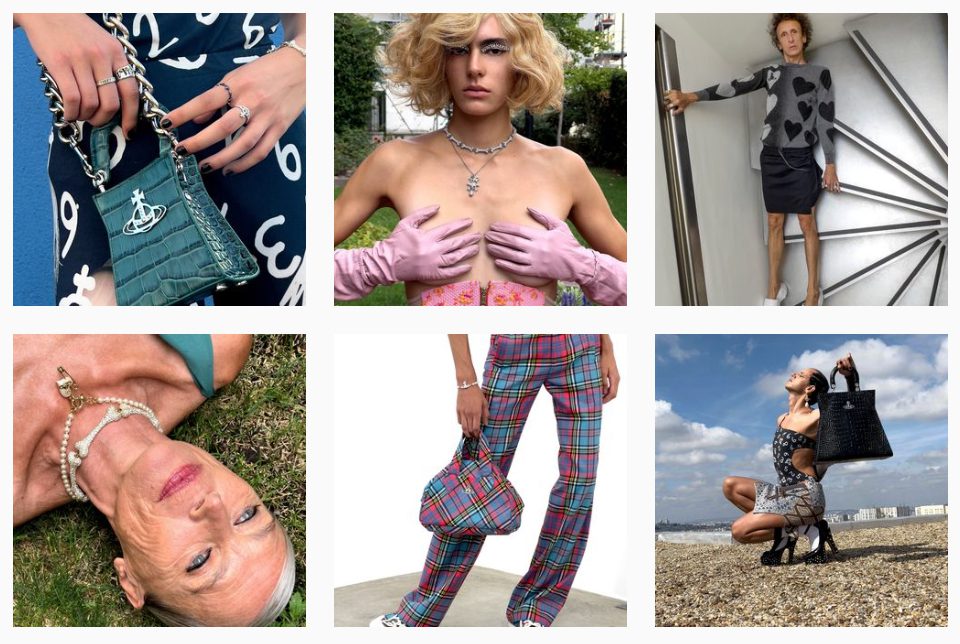Last update on: 10:01 pm December 30, 2022 by fashionabc
British fashion designer and activist Vivienne Westwood, popularly known as “The Priestess Of Punk”, died peacefully at the age of 81 on December 29, 2022. It is a huge loss for Fashion because not only did she consistently produce pioneering designs throughout her six-decade career but she also used Fashion as a platform to draw attention to the climate crisis and sustainability.

Recent posts on Vivienne Westwood’s Instagram account
Vivienne Westwood’s fashion journey is quite inspiring. Hailing from Derbyshire, Vivienne studied at Harrow School of Art and University of Westminster, undertaking courses in fashion and silver-smithing, but left it within a term to undertake a job as a primary school art teacher while simultaneously designing her own line of jewellery. After an unsuccessful marriage with Derek Westwood, she met Malcolm McLaren and moved to Clapham. In no time, Vivienne Westwood became ‘the high priestess of punk’ who designed bondage jeans, shredded tops, rubber dresses and much more which she retailed in Malcom McLaren’s store, ‘Sex’, in the Seventies. And when McLaren became manager of punk band, Sex Pistols, the duo made headlines when the band members wore their punk-inspired designs intended to create shock value.
“We wanted to undermine the establishment,” Westwood told BoF. “We hate it. We want to destroy it. We don’t want it. We were youth against age, that’s what it was… The way I rationalise it is that we have every right to do it, because what we are saying to the older generation is: ‘You’ve mismanaged this world, and we don’t accept any of your advice, and what’s more, we don’t accept any of your taboos, and, you know, we are just going to confront you with all this.”
It was she who first introduced bondage trousers and other aspects of BDSM, along with safety pins and chains, to mainstream fashion. Westwood also inspired the style of punk icons, such as Viv Albertine, who wrote in her memoir, ‘Vivienne and Malcolm use clothes to shock, irritate and provoke a reaction but also to inspire change. Mohair jumpers, knitted on big needles, so loosely that you can see all the way through them, T-shirts slashed and written on by hand, seams and labels on the outside, showing the construction of the piece…’
Per Vogue, “A provocateur, radical thinker and instigator of the most important sartorial statements of the twentieth and twenty-first centuries, Vivienne Westwood is a fearless nonconformist with a relentless passion for tradition… Her revolutionary designs include the co-creation of the punk style, the introduction of street style into high fashion, the reworking of the crinoline, the restyling of Harris tweed and the reintroduction of platforms and the hourglass figure.”
Westwood became disenchanted with punk after its absorption into mainstream fashion and turned her eye from the scandalous to the beautiful. Her interest in historical research served as inspiration for her first runway show in 1981, titled ‘Pirates’, with wide-leg, wide-striped Buccaneer pants and shirts with draped sashes. Her use of Seventeenth and Eighteenth century cutting techniques, particularly the radical cutting lines she developed for men’s trousers, continue to be used today. Per BoF, ‘the show marked a turning point that legitimised Westwood among the fashion press and resulted in orders from retailers like Bloomingdale’s, Henri Bendel and Joseph.’ Subsequently, the duo created collections titled Savage, Buffalo Girls, New Romantics and The Pagan Years.
Per Vogue, “She has been described by Anna Wintour as ‘an unbelievable influence’ and by Alexander McQueen as ‘the Coco Chanel of our day’.”
Soon she was invited to show her collections in Paris, where her 1983 Witches collection featured prints by Keith Haring, and active sportswear and sweatsuit pieces that were championed by Madonna, resulting in lucrative commercial orders, but also financial turmoil when Westwood and McLaren’s personal relationship further devolved into acrimony and the couple finally split. Some of her most famous styles included the “Mini Crini” a short version of the nineteenth-century hoop skirt; corsets and bustiers worn on top of clothing; cropped knitwear; and youthful tweed coats. Significantly, her 1987 collection revived fashion’s interest in classic British fabrics.
This coincided with Westwood’s desire to move away from street fashion and to be accepted by the fashion A-list. Her dream was realised when she won Designer of the Year at the British Fashion Awards in 1990, 1991 and once again in 2006. Her achievements were also celebrated with a retrospective at the Victoria and Albert Museum. In June 2013, Westwood announced she was going to focus on environmental and sustainability issues. And though she remained active in fashion, she became a spokeswoman for Climate Revolution and travelled with Greenpeace to the Arctic to inspire young people to engage with the environment. Her collections reflected her ideologies. For Milan Fashion Week Spring Summer 2015, Westwood allied with nonprofit organisation ‘Farms Not Factories’ to design T-shirts and tote bags made using ethically sourced organic cotton.
“When I was little, I saw a picture of the crucifixion and it really did change my life,” she said in the 2018 documentary. “I thought to myself, my parents have been deceiving me — they told me all about the Baby Jesus, but they never told me what happened to him. And I thought I just can’t trust the people in this world. I’ve got to find out for myself. I did feel I had to be like a knight to stop people doing terrible things to each other. And I think that that’s had something to do with my fashion as well. It’s always got to be that. You know you’ve got to cut a figure and be prepared for action and engagement with things.”
Vivienne Westwood continued to be a powerful force in Fashion, right up to Autumn Winter 2021. Per Vogue, “From the mini-crini and beyond, Westwood has long upcycled deadstock modes of dressing to renew them through her urgent and maverick eye. This collection’s refreshed melange… starred across prints on shirting, T-shirts, denim, bodysuits, dresses and a frock-coatish parka, competing with clashing ginghams, stripes, herringbones, and checks. Not unlike Boucher, Westwood is a master at subverting apparent propriety to invoke the truthful and unruly; her signature brushstrokes of drunken tailoring and subversive drape were in full effect here.”

Snapshot of Vivienne Westwood’s Instagram account
Following news of the designer’s passing yesterday at the age of 81, the fashion industry’s key players have been paying tribute on social media, from Naomi Campbell to Donatella Versace, Marc Jacobs and Stella McCartney. One of the most moving tributes to Dame Vivienne Westwood was from Anna Wintour, chief content officer, Condé Nast, and global editorial director, Vogue. Per Vogue, she wrote, “Dame Vivienne Westwood was an extraordinary talent: an innovative and influential designer, and an iconoclast who pursued every belief and passion with a rare fervor. One of my very favorite Costume Institute shows, Anglomania, celebrated British fashion, but really it was a celebration of Vivienne. She was at the heart of it all, the designer that every single designer wanted to meet at the gala. She was a provocateur, and one with a deep understanding of what made her homeland tick: that peculiarly British blend of history, class, sex, romanticism, and tradition, which she worked up into the most magical and imaginative of clothes.”
Vivienne Westwood had received numerous accolades throughout her career, including being made a Dame Commander of the Order of the British Empire in 2006, and receiving the Outstanding Achievement in Fashion award at the British Fashion Awards in 2007. She had also been inducted into the Fashion Walk of Fame in London and had received an honorary doctorate from the Royal College of Art.
Rest in Power, Vivienne,
Jasmeen Dugal is a Senior Writer at Businessabc.net and Editor at fashionabc.org, contributing her insights on fashion, technology, and sustainability. She brings with herself, more than two decades of editorial experience, working for national newspapers and luxury magazines.
Jasmeen Dugal has worked with exchange4media as a senior writer and then with Condenast India as Net Editor where she helmed Vogue India’s official website in terms of design, layout and daily content.
Besides this, she is also an entrepreneur running her own luxury portal www.explosivefashion.in, which highlights the latest in luxury fashion and hospitality.








